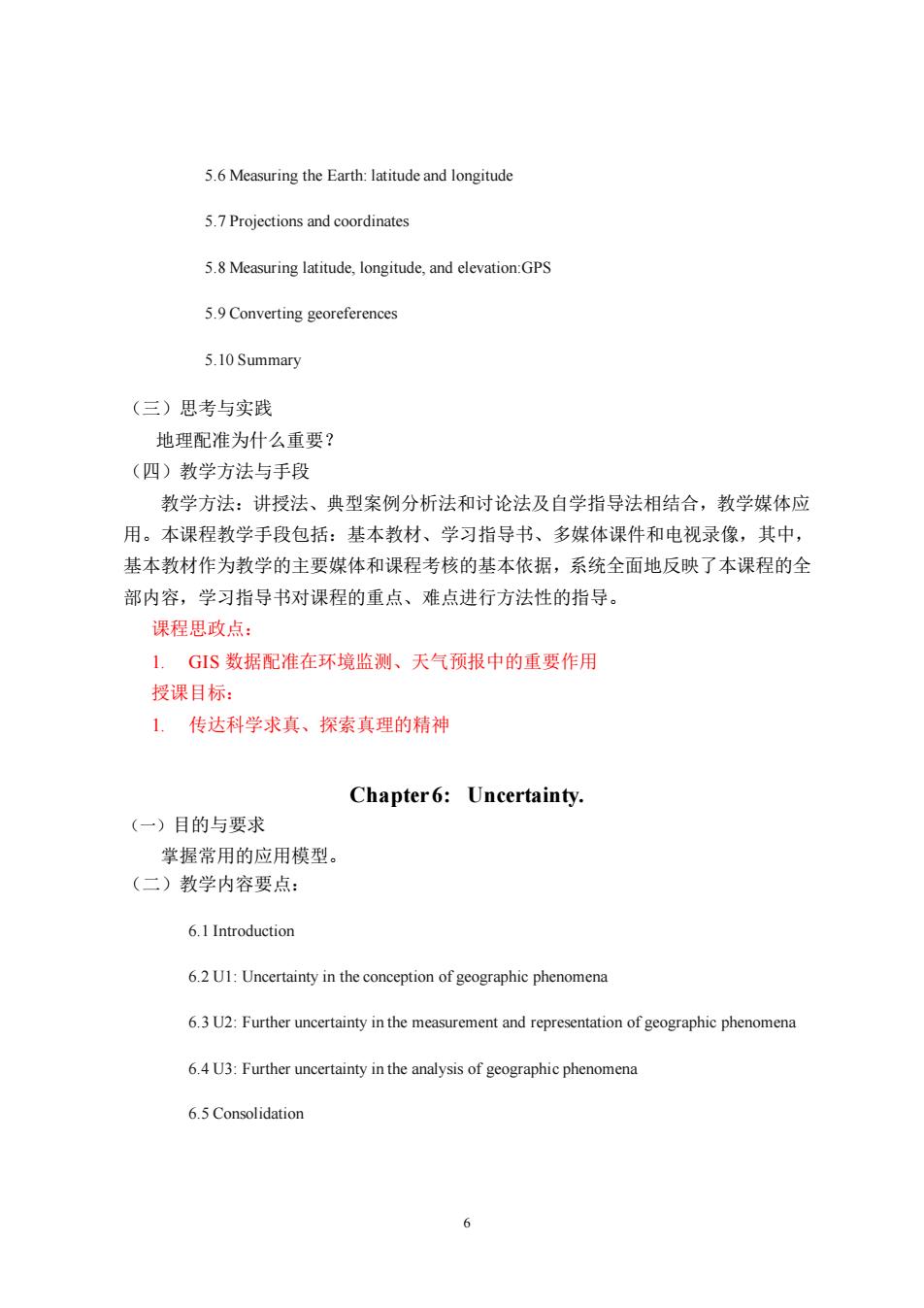正在加载图片...

5.6 Measuring the Earth:latitude and longitude 5.7Projections and coordinates 5.8 Measuring latitude,longitude,and elevation:GPS 5.9Converting georeferences 5.10 Summary (三)思考与实践 地理配准为什么重要? (四)教学方法与手段 教学方法:讲授法、典型案例分析法和讨论法及自学指导法相结合,教学媒体应 用。本课程教学手段包括:基本教材、学习指导书、多媒体课件和电视录像,其中, 基本教材作为教学的主要媒体和课程考核的基本依据,系统全面地反映了本课程的全 部内容,学习指导书对课程的重点、难点进行方法性的指导。 课程思政点: 1.GS数据配准在环境监测、天气预报中的重要作用 授课目标: 1.传达科学求真、探索真理的精神 Chapter6:Uncertainty. (一)目的与要求 掌握常用的应用模型。 (二)教学内容要点: 6.1 Introduction 6.2 U1:Uncertainty in the conception of geographic phenomena 6.3 U2:Further uncertainty in the measurement and representation of geographic phenomena 6.4 U3:Further uncertainty in the analysis of geographic phenomena 6 5 Consolidation 6 5.6 Measuring the Earth: latitude and longitude 5.7 Projections and coordinates 5.8 Measuring latitude, longitude, and elevation:GPS 5.9 Converting georeferences 5.10 Summary (三)思考与实践 地理配准为什么重要? (四)教学方法与手段 教学方法:讲授法、典型案例分析法和讨论法及自学指导法相结合,教学媒体应 用。本课程教学手段包括:基本教材、学习指导书、多媒体课件和电视录像,其中, 基本教材作为教学的主要媒体和课程考核的基本依据,系统全面地反映了本课程的全 部内容,学习指导书对课程的重点、难点进行方法性的指导。 课程思政点: 1. GIS 数据配准在环境监测、天气预报中的重要作用 授课目标: 1. 传达科学求真、探索真理的精神 Chapter 6: Uncertainty. (一)目的与要求 掌握常用的应用模型。 (二)教学内容要点: 6.1 Introduction 6.2 U1: Uncertainty in the conception of geographic phenomena 6.3 U2: Further uncertainty in the measurement and representation of geographic phenomena 6.4 U3: Further uncertainty in the analysis of geographic phenomena 6.5 Consolidation